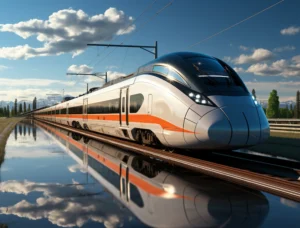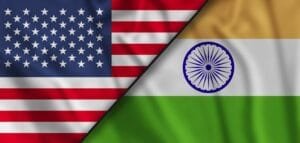78th Independence Day of India

78th Independence Day of India: A Celebration of Freedom, Unity, and Progress
Introduction
78th Independence Day of India, observed annually on 15 August, is a public holiday that commemorates the nation’s liberation from British colonial rule on 15 August 1947. This day holds deep significance for every Indian, symbolizing the end of nearly two centuries of British dominance and the dawn of a new era of self-governance, unity, and sovereignty.
On this day in 1947, the Indian Independence Act came into force, transferring legislative sovereignty to the Indian Constituent Assembly. This monumental event marked the culmination of a prolonged struggle for independence, a movement characterized by non-violent resistance, civil disobedience, and the indomitable spirit of millions of Indians.
As India prepares to celebrate its 78th Independence Day of India on 15 August 2024, it is essential to reflect on the nation’s remarkable journey over the past seven decades, the significance of this day, and the contributions of those who fought valiantly for India’s freedom.
The Historical Struggle for Independence
India’s fight for independence was one of the most significant and transformative events of the 20th century. The struggle, which spanned several decades, was fueled by a deep desire for self-rule and the growing discontent among Indians with the exploitative policies of the British Empire.
Early Movements and Revolts
The Indian struggle for independence began long before the formal movement led by the Indian National Congress (INC). The 1857 Sepoy Mutiny, also known as the First War of Indian Independence, marked the first large-scale uprising against British rule. Though ultimately unsuccessful, the rebellion ignited a spark of resistance that would continue to grow over the following decades.
In the late 19th and early 20th centuries, several regional and national movements emerged, laying the groundwork for the larger freedom struggle. Leaders like Bal Gangadhar Tilak, Lala Lajpat Rai, and Bipin Chandra Pal—collectively known as the Lal-Bal-Pal trio—played crucial roles in raising awareness and mobilizing the masses. The Swadeshi Movement (1905), initiated in response to the partition of Bengal, was one of the early examples of mass resistance, encouraging Indians to boycott British goods and promote indigenous products.
The Role of the Indian National Congress
The Indian National Congress, founded in 1885, became the principal platform for India’s independence movement. Initially, the INC sought moderate reforms through petitions and dialogues with the British government. However, as the demands for self-rule grew stronger, the Congress adopted a more assertive stance, advocating for complete independence.
The arrival of Mahatma Gandhi on the Indian political scene in 1915 marked a turning point in the struggle for freedom. Gandhi’s philosophy of Satyagraha—a form of non-violent resistance—galvanized millions of Indians from all walks of life to join the movement. His leadership during key campaigns such as the Non-Cooperation Movement (1920), the Salt March (1930), and the Quit India Movement (1942) played a pivotal role in challenging British authority and rallying the nation towards independence.
The Impact of World Wars and the Crippling British Empire
The two World Wars had a profound impact on the British Empire and its colonies. During World War I (1914-1918), India contributed significantly to the British war effort, both in terms of resources and manpower. However, the post-war period saw growing disillusionment among Indians as their demands for greater autonomy were met with repression, leading to events like the Jallianwala Bagh Massacre in 1919.
World War II (1939-1945) further weakened the British Empire, both economically and militarily. The British reliance on Indian support during the war, coupled with rising nationalist sentiments, put immense pressure on the British government. The Cripps Mission (1942), which promised eventual dominion status for India, was rejected by Indian leaders who now sought complete independence.
The Final Push: Partition and Independence
The post-war period saw the British government grappling with the realities of maintaining control over India. The growing communal tensions between Hindus and Muslims, fueled by the divide-and-rule policies of the British, complicated the path to independence. The demand for a separate Muslim state, led by Muhammad Ali Jinnah and the All India Muslim League, culminated in the tragic partition of India and the creation of Pakistan.
On 15 August 1947, India finally achieved independence, but the joy of freedom was marred by the pain of partition. The division led to unprecedented violence, mass migrations, and the loss of countless lives. Despite these challenges, India emerged as a sovereign nation, with Jawaharlal Nehru becoming the first Prime Minister of independent India.
Why Independence Day is Celebrated
78th Independence Day of India is more than just a public holiday; it is a day of immense national pride and reflection. It serves as a reminder of the sacrifices made by countless individuals—freedom fighters, revolutionaries, and ordinary citizens—who laid down their lives for the cause of independence. It is a day to honor their legacy and to renew the nation’s commitment to the ideals of liberty, equality, and justice.
Honoring the Freedom Fighters
India’s independence was hard-won, and the journey was paved with the sacrifices of millions. From the martyrs of the 1857 uprising to the leaders of the Quit India Movement, the freedom struggle was marked by acts of bravery and selflessness. Figures like Bhagat Singh, Sardar Vallabhbhai Patel, Rani Lakshmibai, and Chandrashekhar Azad are just a few of the many heroes whose contributions are remembered on this day.
78th Independence Day of India is an opportunity to pay tribute to these heroes and to educate future generations about the importance of their contributions. Schools, colleges, and communities across the country organize events to remember and honor the sacrifices made for the nation’s freedom.
Reflecting on National Progress
78th Independence Day of India is also a time to reflect on the progress India has made since 1947. Over the past 77 years, India has evolved from a newly independent nation to one of the world’s largest democracies and fastest-growing economies. The journey has been marked by significant achievements in various fields, including science and technology, education, healthcare, and infrastructure.
However, the day also serves as a reminder of the challenges that still lie ahead. Issues such as poverty, inequality, corruption, and communal tensions continue to hinder the nation’s progress. Independence Day is a time to reaffirm the nation’s commitment to addressing these challenges and working towards a more inclusive and equitable society.
Inspiring Future Generations
One of the most important aspects of Independence Day is its role in inspiring future generations. The stories of the freedom struggle and the achievements of independent India serve as a source of motivation for young Indians. It is a day to instill a sense of patriotism, pride, and responsibility in the nation’s youth, encouraging them to contribute to the country’s continued growth and development.
Schools and educational institutions play a crucial role in this aspect of the celebration. By organizing flag-hoisting ceremonies, cultural performances, and educational programs, they help young students understand the significance of Independence Day and the values it represents.
Celebrating the 78th Independence Day (August 15, 2024)
The 78th Independence Day of India, celebrated on 15 August 2024, marks 77 years since the country gained independence from British rule. This day is a time for the entire nation to come together in a spirit of unity, pride, and patriotism.
National Celebrations and Flag-Hoisting Ceremony
The centerpiece of the Independence Day celebrations is the flag-hoisting ceremony at the Red Fort in New Delhi. This historic event is presided over by the Prime Minister of India, who unfurls the national flag amidst the singing of the national anthem, Jana Gana Mana. The Prime Minister then delivers a speech to the nation, highlighting the achievements of the past year and outlining the government’s vision for the future.
The Red Fort ceremony is attended by dignitaries, government officials, and citizens from all walks of life. The event is broadcast live on national television, allowing millions of Indians to participate in the celebrations from their homes. The ceremony is a powerful symbol of the nation’s unity and a reminder of the struggles that led to India’s independence.
In addition to the main event at the Red Fort, flag-hoisting ceremonies are held in state capitals, district headquarters, and villages across the country. These events are often accompanied by cultural programs, parades, and performances that showcase the rich diversity and heritage of India.
Cultural Performances and Patriotic Songs
78th Independence Day of India is also a celebration of India’s vibrant culture and traditions. Cultural performances, including music, dance, and drama, are an integral part of the festivities. Schools, colleges, and community organizations organize events that feature patriotic songs, folk dances, and skits depicting episodes from the freedom struggle.
Songs like Vande Mataram, Saare Jahan Se Achha, and Ae Mere Watan Ke Logon are sung with great fervor, evoking a deep sense of national pride and unity. These performances serve as a reminder of the cultural richness and diversity that define India and contribute to its unique identity on the global stage.
Patriotic Displays and Parades
Across the country, Independence Day is marked by parades that showcase the strength and diversity of the Indian armed forces, paramilitary



